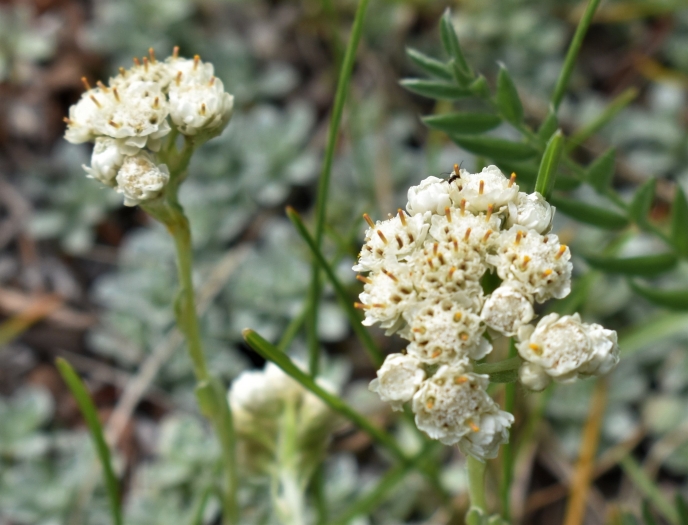Littleleaf Pussytoes
(Antennaria microphylla)
Littleleaf Pussytoes (Antennaria microphylla)
/
/

© Eric Lamb
CC BY 4.0
Image By:
© Eric Lamb
Recorded By:
Copyright:
CC BY 4.0
Copyright Notice:
Photo by: © Eric Lamb | License Type: CC BY 4.0 | License URL: http://creativecommons.org/licenses/by/4.0/ | Uploader: eric_lamb | Publisher: iNaturalist |

























Estimated Native Range
Summary
Antennaria microphylla, commonly known as Littleleaf Pussytoes, is a stoloniferous perennial herb native to a variety of habitats including alpine and subalpine zones, dry meadows, open woodlands, and rocky slopes across northern and western North America. It typically grows to a height of 1-12 inches, forming mats of gray-green foliage with spoon-shaped or oblong leaves. From late May to July, it produces clusters of small, white to pale pink flowers that resemble the pads of a cat’s paw, hence the common name. The flowers are modest in size but can be quite showy en masse.
Littleleaf Pussytoes is appreciated for its fine-textured foliage and its ability to form dense mats, making it an excellent ground cover for rock gardens, borders, and xeriscaping. It is also used in ecological plantings to support wildlife, as it is a host plant for the American Painted Lady butterfly. This plant thrives in full sun to part shade and prefers well-drained soils, tolerating a range of soil types from sandy to loamy. It is drought-tolerant once established and requires minimal maintenance. While generally disease-free, it can occasionally suffer from root rot in poorly drained soils. Littleleaf Pussytoes is not known for aggressive roots or significant disease problems, making it a reliable choice for gardeners seeking a low-maintenance perennial.CC BY-SA 4.0
Littleleaf Pussytoes is appreciated for its fine-textured foliage and its ability to form dense mats, making it an excellent ground cover for rock gardens, borders, and xeriscaping. It is also used in ecological plantings to support wildlife, as it is a host plant for the American Painted Lady butterfly. This plant thrives in full sun to part shade and prefers well-drained soils, tolerating a range of soil types from sandy to loamy. It is drought-tolerant once established and requires minimal maintenance. While generally disease-free, it can occasionally suffer from root rot in poorly drained soils. Littleleaf Pussytoes is not known for aggressive roots or significant disease problems, making it a reliable choice for gardeners seeking a low-maintenance perennial.CC BY-SA 4.0
Plant Description
- Plant Type: Herb
- Height: 0.1-0.5 feet
- Width: 0.5-1 feet
- Growth Rate: Slow
- Flower Color: Pink, White
- Flowering Season: Spring, Summer
- Leaf Retention: Deciduous, Semi-deciduous
Growth Requirements
- Sun: Full Sun, Part Shade
- Water: Low
- Drainage: Medium, Slow
Common Uses
Groundcover, Low Maintenance, Rock Garden
Natural Habitat
Alpine and subalpine zones, dry meadows, open woodlands, and rocky slopes
Other Names
Common Names: Small-Leaf Pussytoes, Pink Pussytoes, Rocky Mountain Pussytoes, Small Leaf Everlasting, Little-Leaved Pussytoes, Neat Everlasting, Rosy Pussytoes, Neat Pussytoes
Scientific Names: , Antennaria microphylla, Antennaria bracteosa, Antennaria dioica var. hyperborea, Antennaria glabrata f. tomentosa, Antennaria groenlandica, Antennaria microphylla var. microphylla, Antennaria microphylla var. solititialis, Antennaria microphylla var. solstitialis, Antennaria nitida
GBIF Accepted Name: